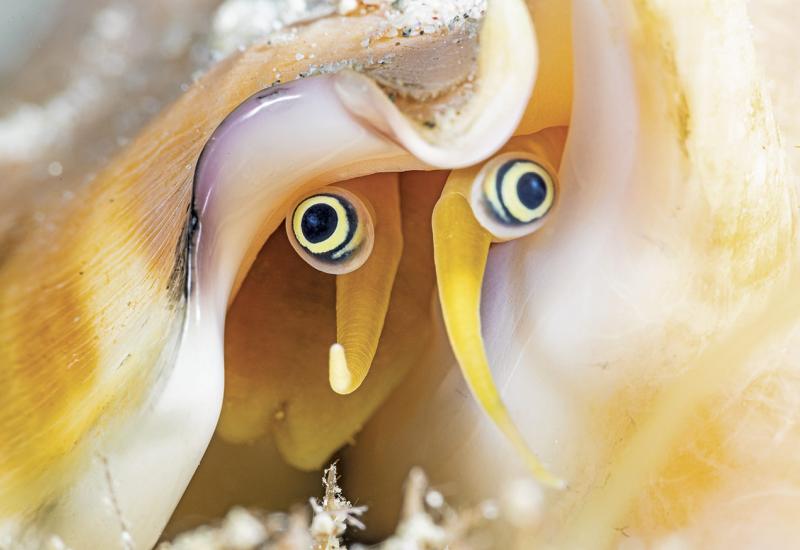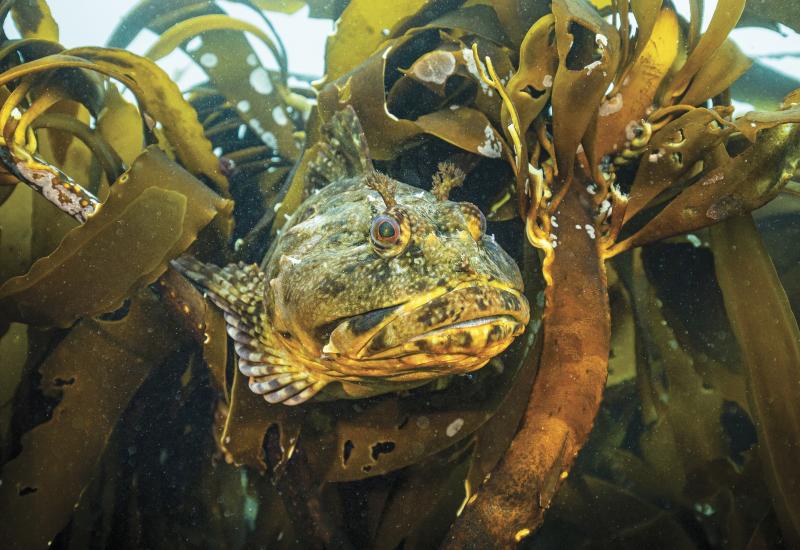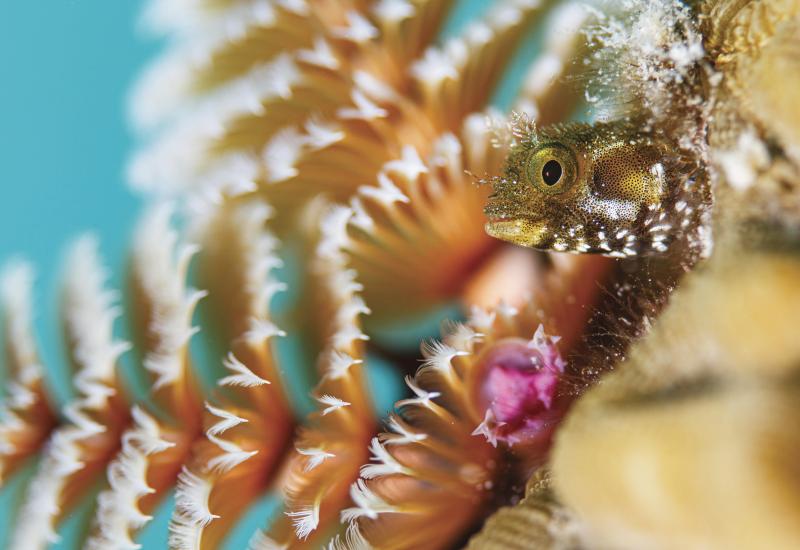Whimsical Wonderland: A Gallery of Underwater Models
Water. We come from it, and we need it to survive. It has both inspired and defeated many a man over thousands of years. It represents one of the most basic building blocks of life, yet has been one of the universe’s biggest mysteries. The calling to water is what started each of us diving. The idea of the unknown, the chance to see creatures others have only read about or seen in pictures has drawn us all to its majesty. The beauty of the ocean and all the wonders that come with it have long been the subject of photographs, both of marine life and of human models. While photographing models in the ocean gives the photographer the backdrop of reefs, a wreck, or countless other treasures, shooting models in a pool is a different situation altogether.
The popularity of underwater fashion photography has grown by leaps and bounds in the past several years. Photographing models in a pool setting both puts pressure on the photographer to turn up the creativity and at the same time allows ample freedom to turn up the creativity. A pool setting creates a blank slate with endless possibilities to use not only a model, but light, reflections, and ripples in the water to produce an intriguing image.
The most vital task to underwater fashion photography is choosing the right model. There are many moving parts to being a good underwater subject, and the model must be able to execute each part both separately and simultaneously. The model being comfortable in the water is crucial, as any anxiety will be evident in the finished image. The ability to keep their eyes open and hold their breath — all while looking relaxed and natural — are also critical to success. I like to use garments that have a lot of movement, whether they be long flowing gowns, sheer scarves, or anything that can convey the freedom and easiness of the water. Since the water can wreak havoc on many materials, the models I’ve worked with get garments and accessories (such as scarves or statement jewelry that will translate in photos) at a local thrift store or from E-Bay. Since communication underwater isn’t a luxury we have in this situation, I always have a thorough briefing with the models prior to going under so they know what I need from them, whether it’s a look, a turn of the head, or placement of their hands. I always have a game plan before entering the water, which gives the models an additional level of comfort, allowing them to concentrate on the task in front of them. My shoots —whether in the ocean or the pool — always include a safety diver. No photo is worth cutting corners from a safety standpoint.
From a technical position, I love to use light to make my underwater fashion photos stand out. The sun is as organic as the water I’m shooting in, so I love to incorporate it whenever possible, and since my number one rule of underwater photography is to “shoot up”, the sun as part of the background fits in perfectly. I then use strobes to fill in the shadows.
Whether you choose to photograph underwater fashion in the ocean or in the pool, be sure your images convey the independence, the grace, and the complexity the water represents. Don’t be afraid to try things, encourage your model to be adventurous, and have a plan before starting. Your images will be as wondrous as their inspiration … water.
More from Criag Dietrich:
Diving with Manta Rays | Diving with Sea Turtles | Discover Underwater Photography
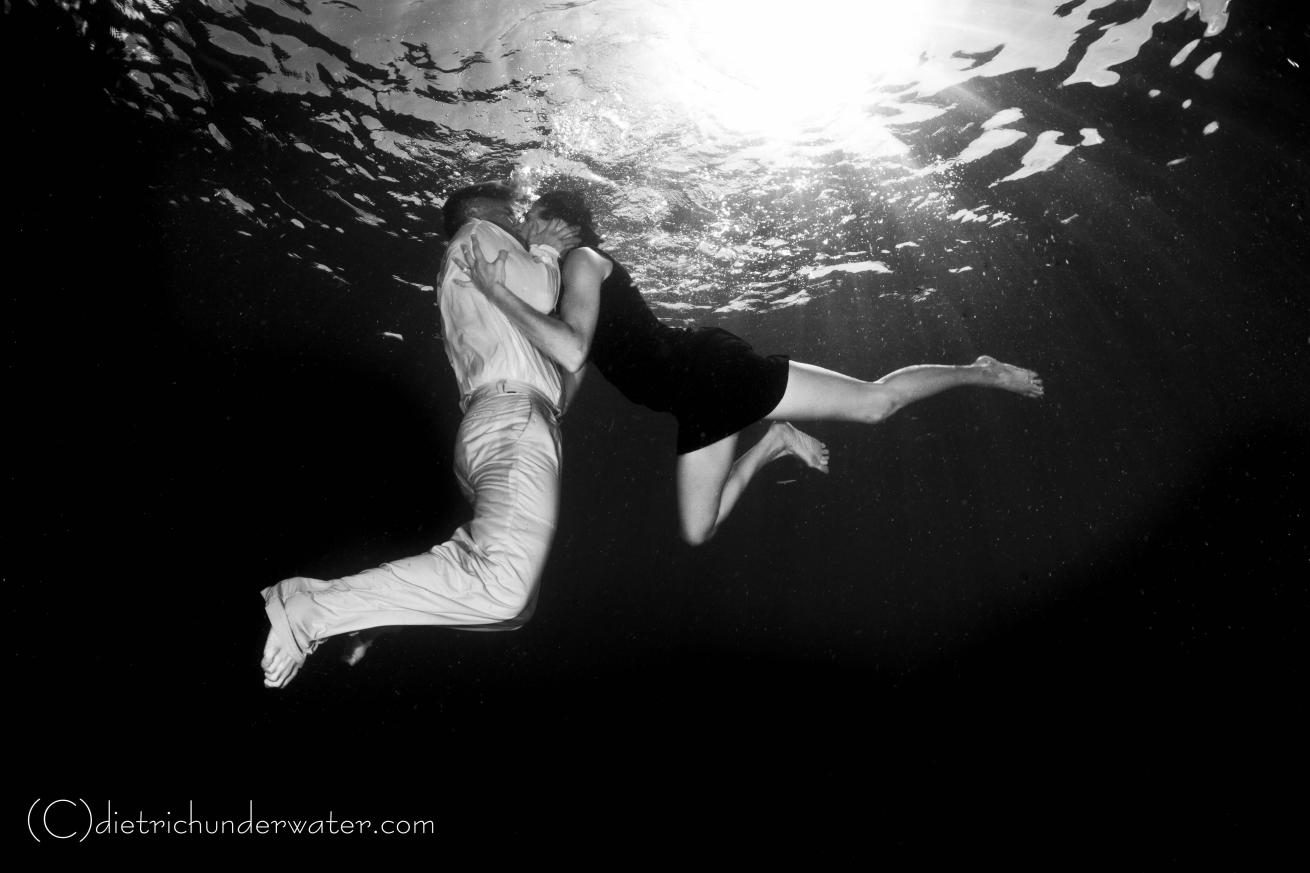
Craig DietrichBlack and White can enhance fashion photography, as shown by this newly engaged couple.
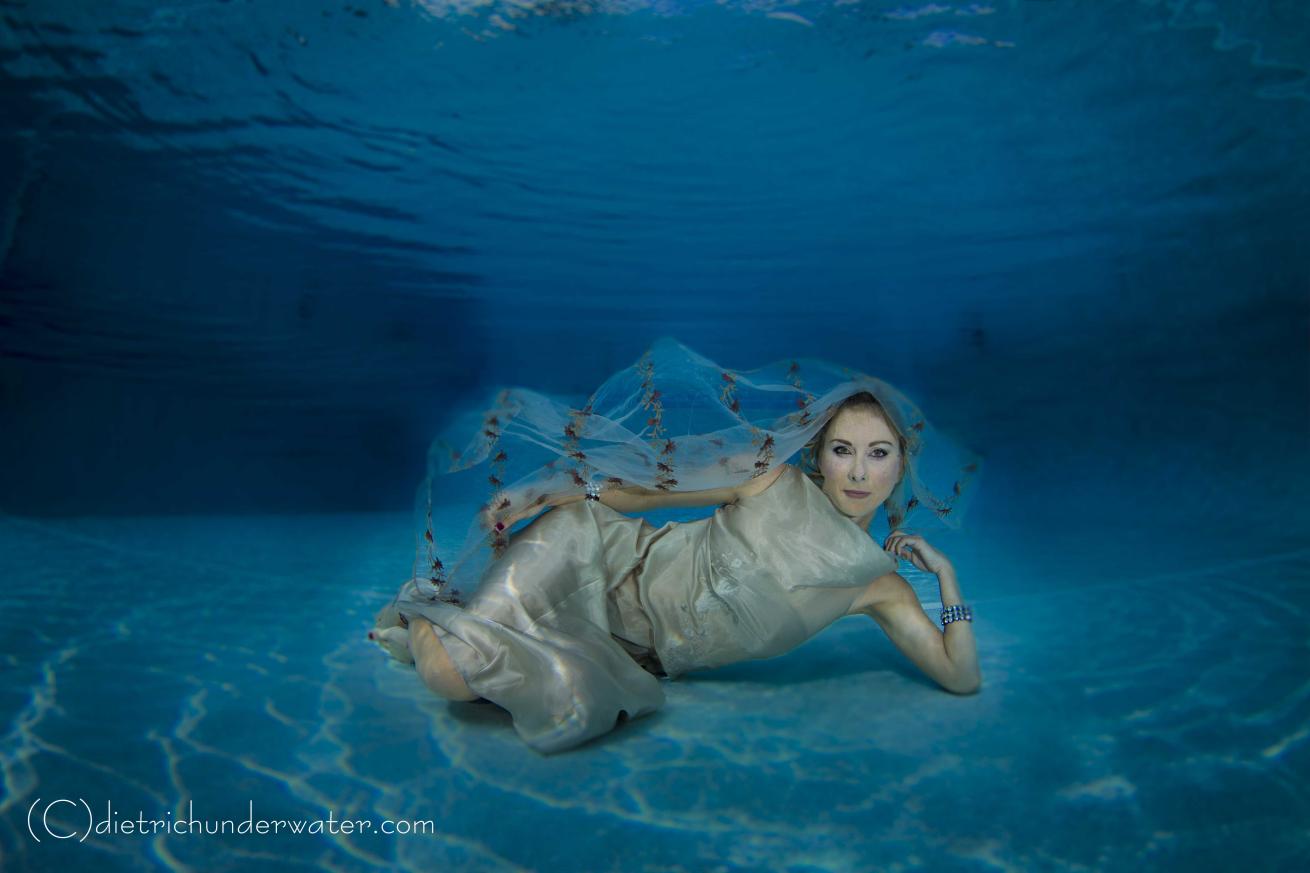
Craig DietrichChoosing flowing fabrics can add mystery to your images.
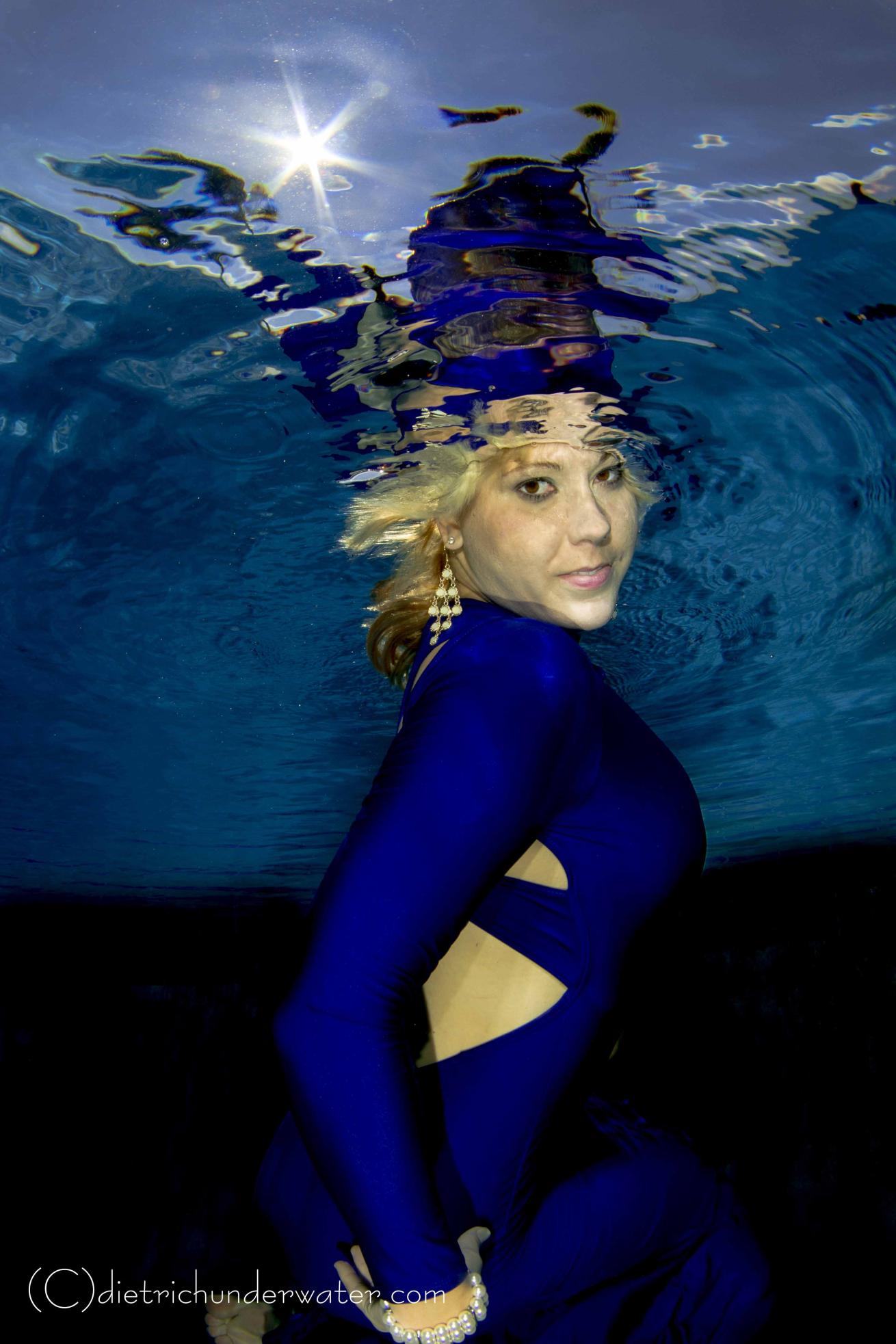
Craig DietrichChoose accessories such as jewelry that enhance — but don't overpower — your model.
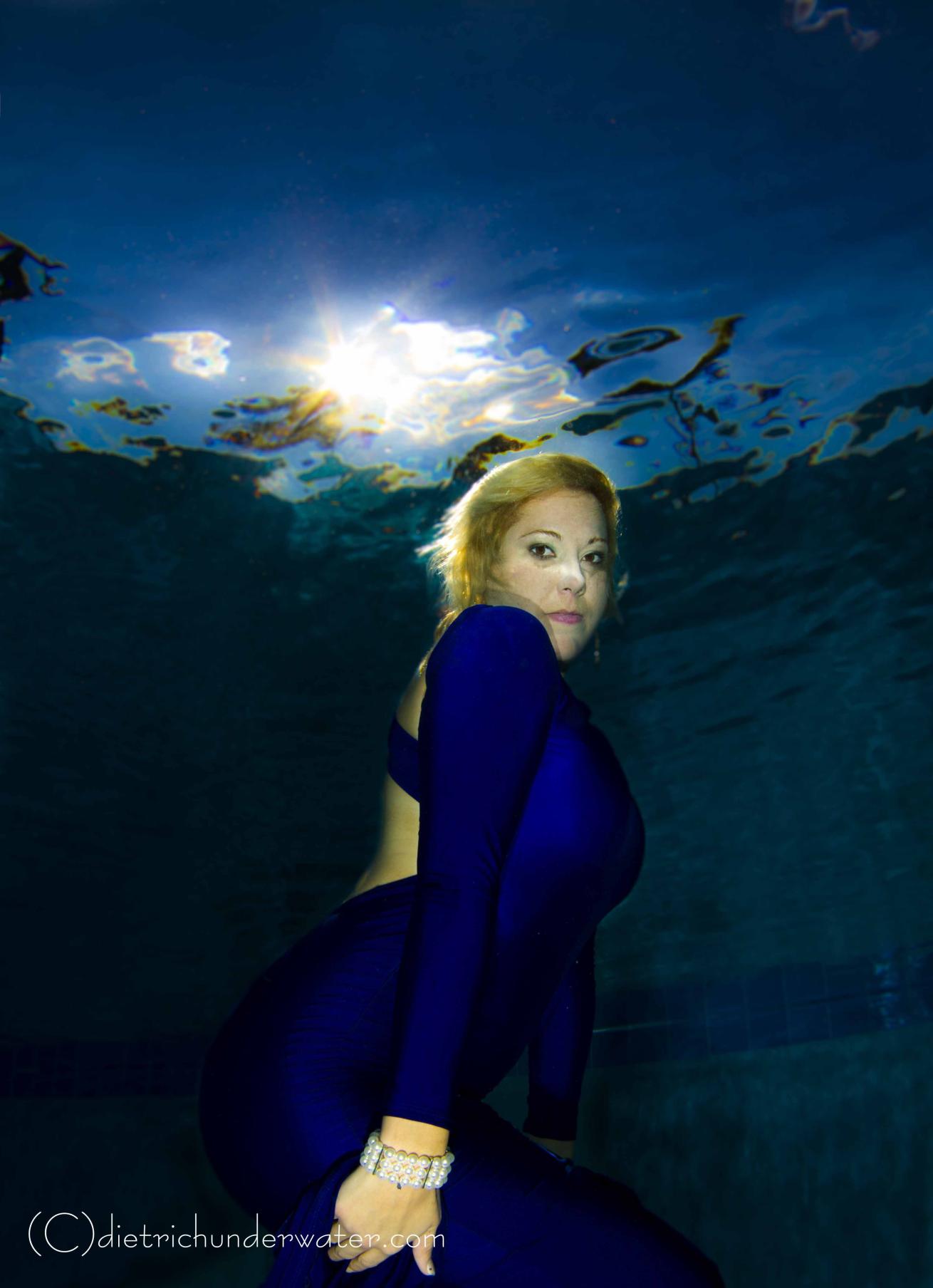
Craig DietrichUsing garment colors that compliment the model's beauty adds a layer of richness to the image.
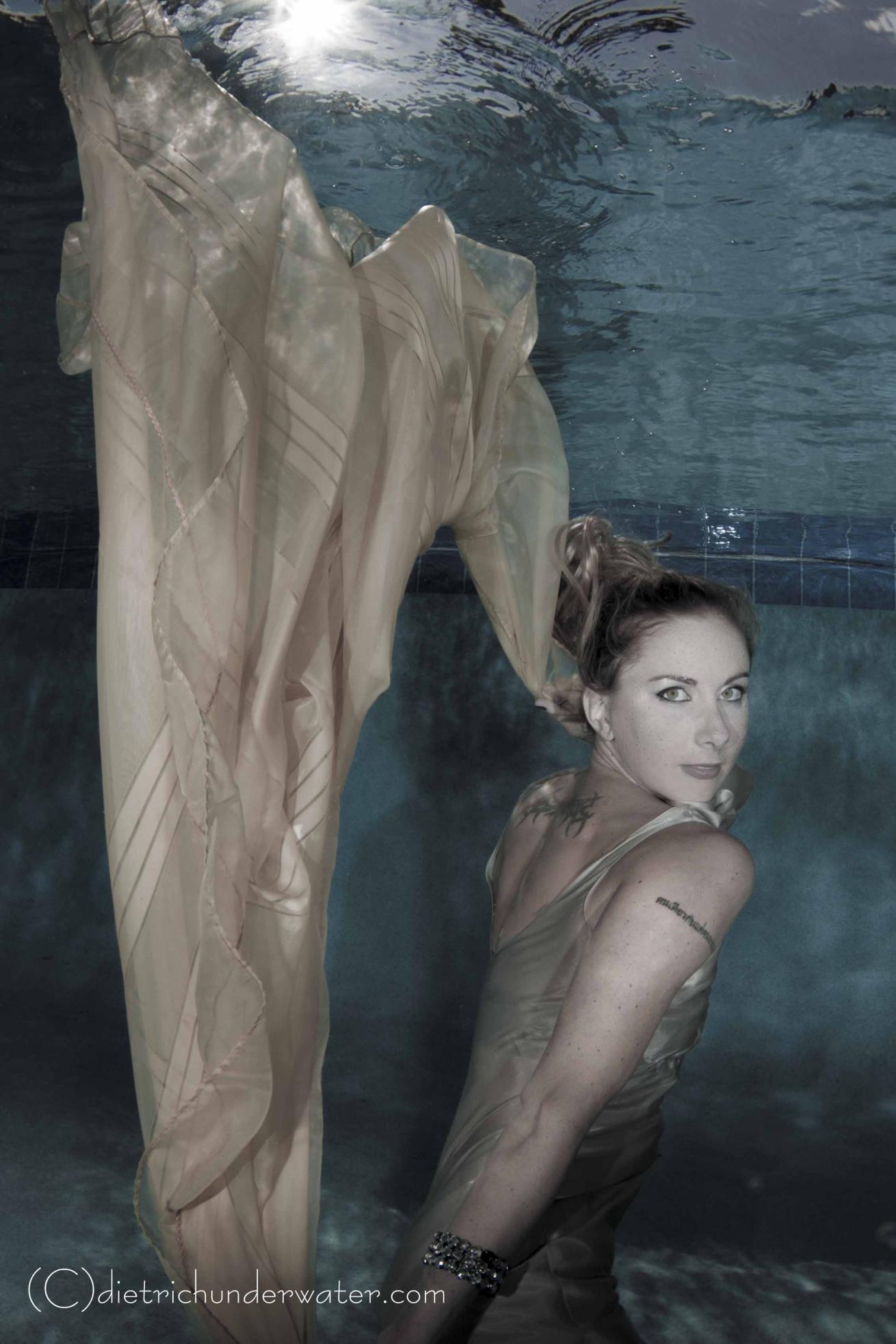
Craig DietrichThe model's connection to the camera is vital.
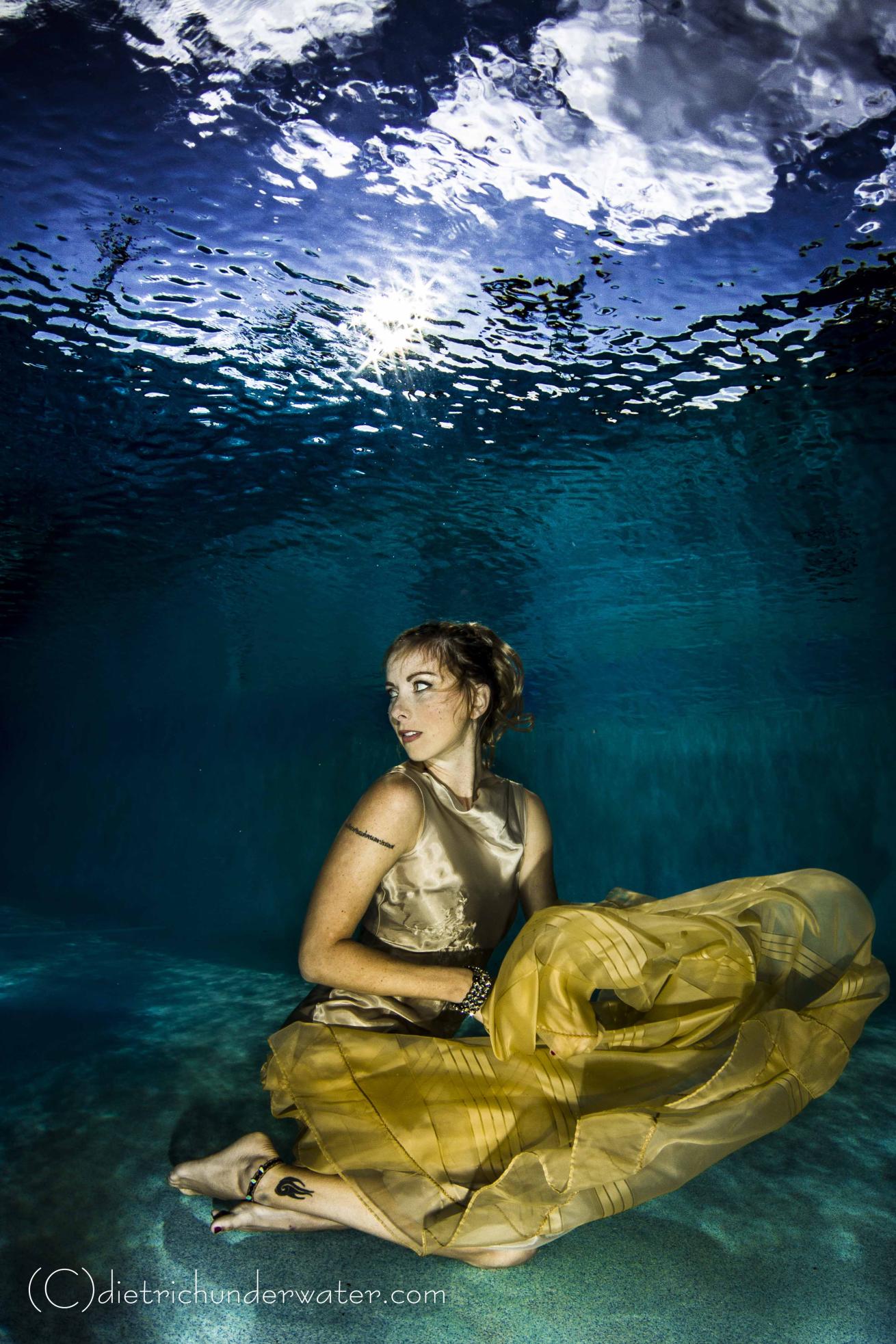
Craig DietrichUsing the textures in the water can add more dimension to the images.
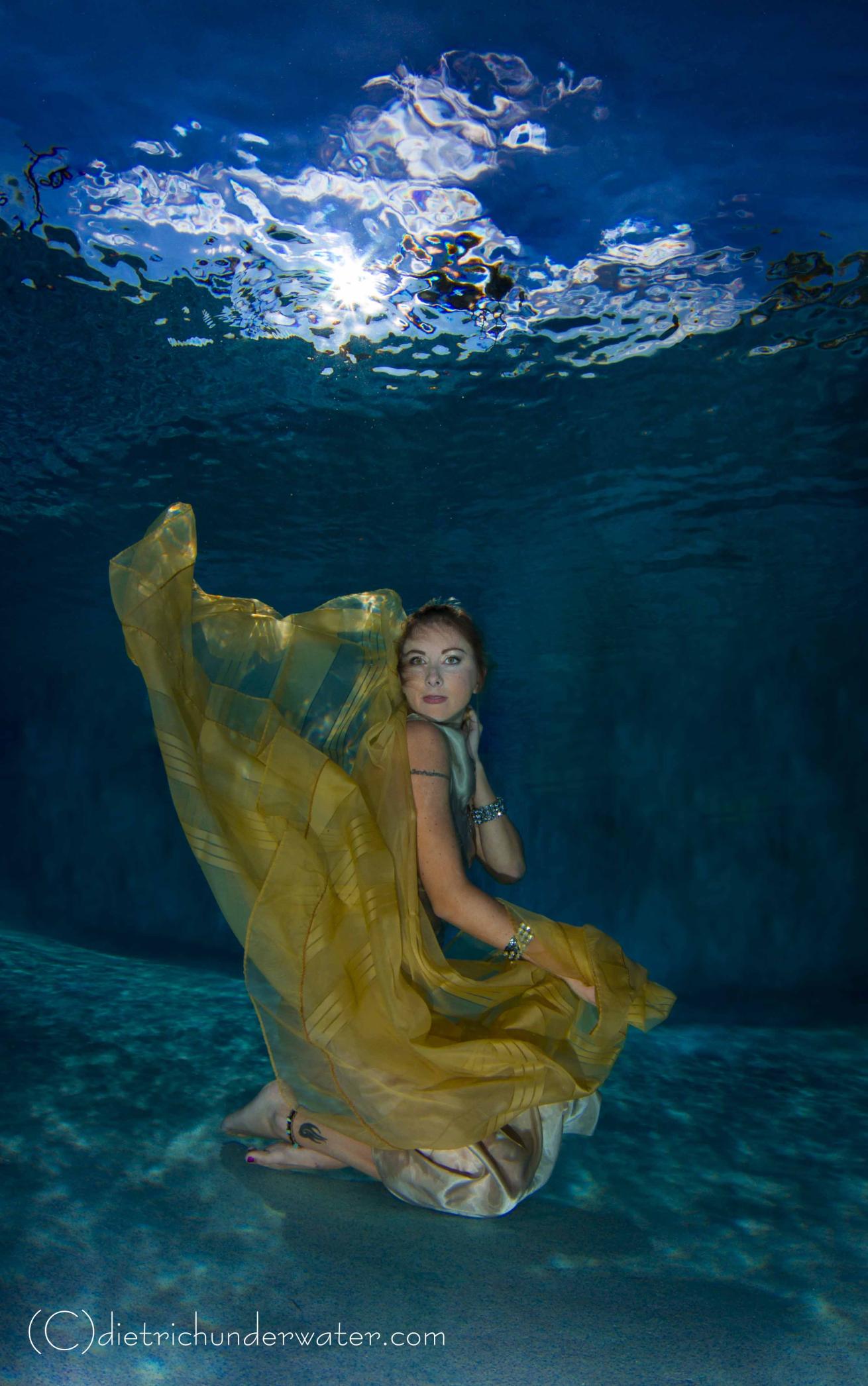
Craig DietrichUtilizing sunlight as part of the image creates added interest.
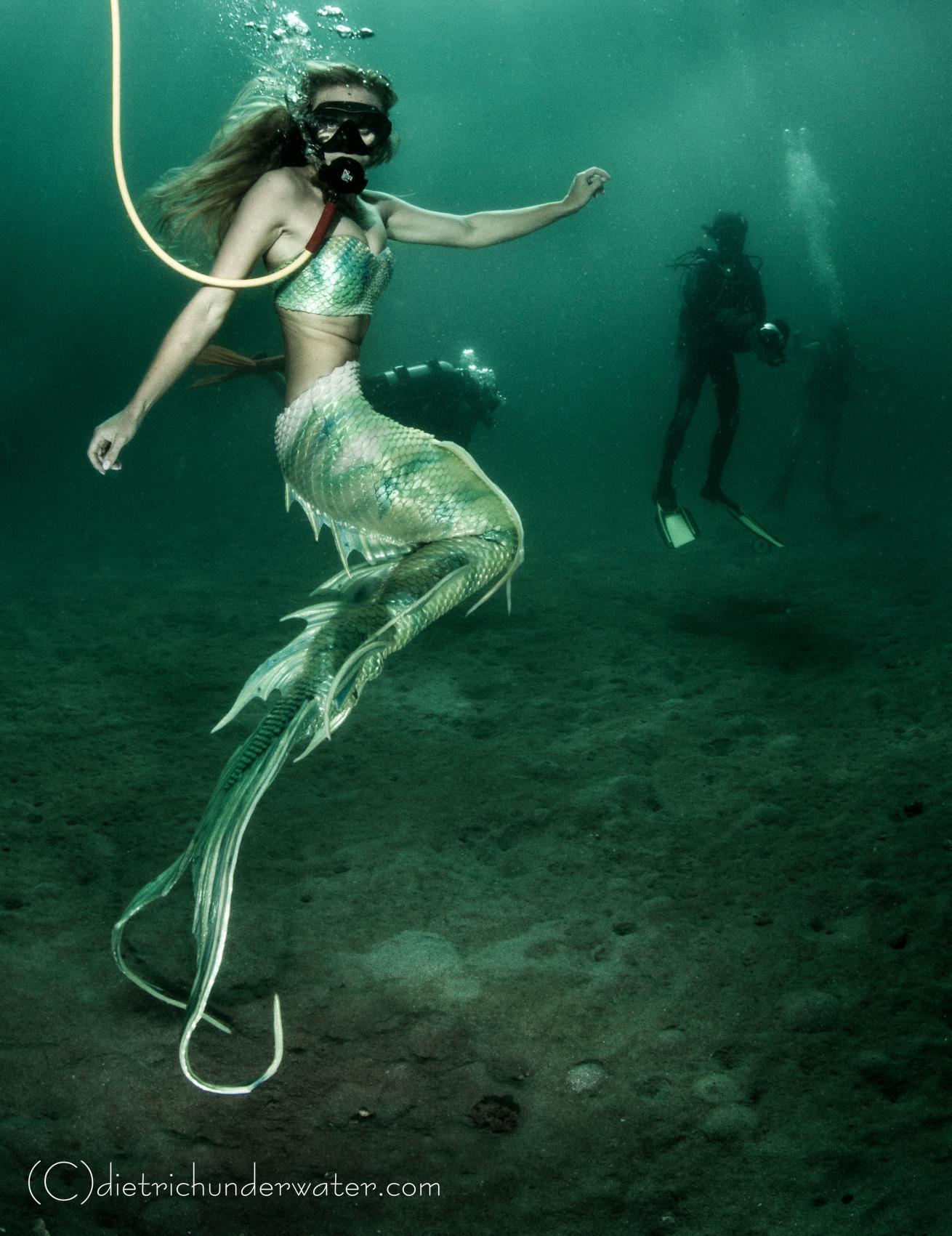
Craig DietrichTools such as a hookah can be used to make the model more comfortable.
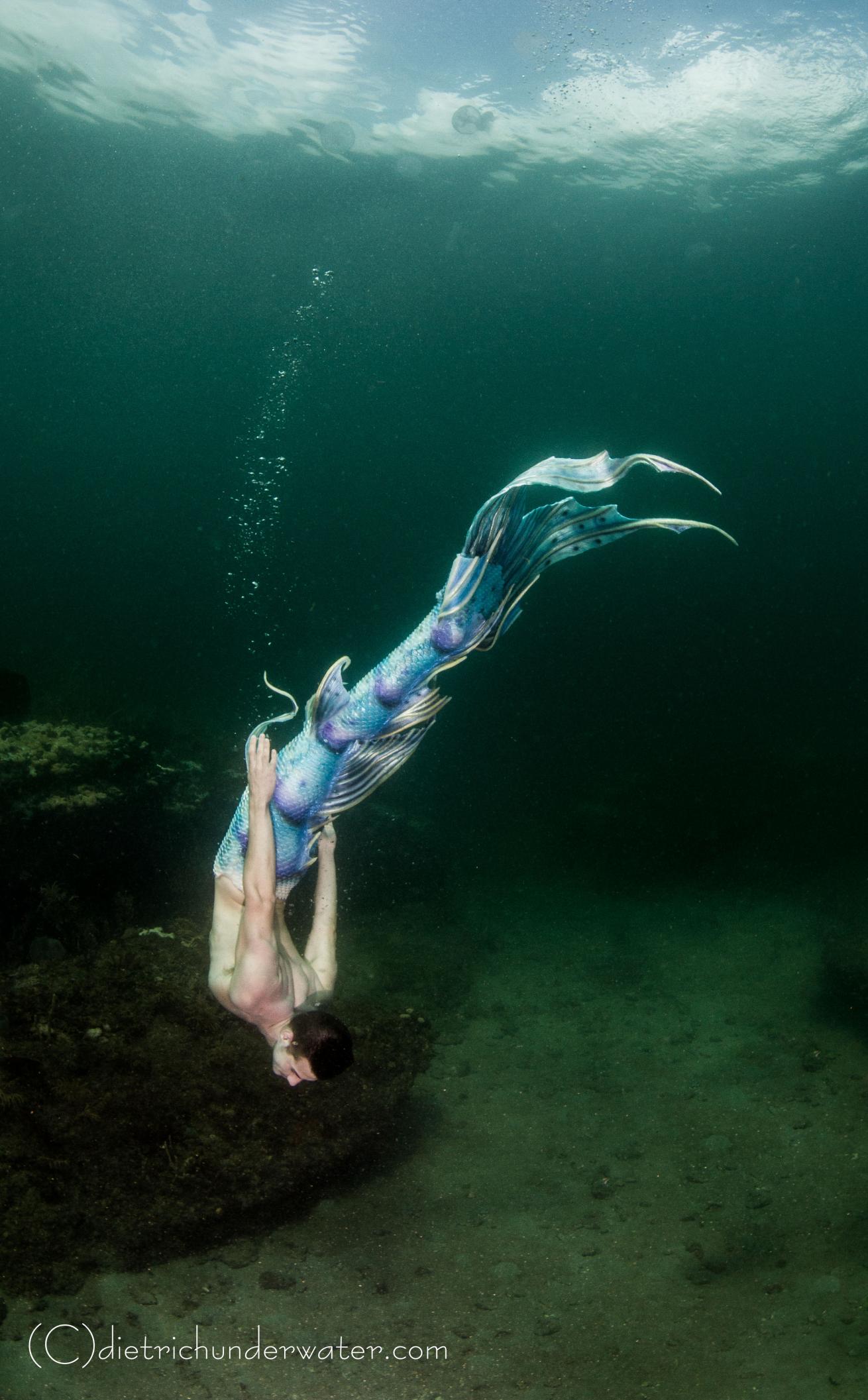
Craig DietrichUsing costumes such as a mermaid take can take images from expected to fantasy.
Water. We come from it, and we need it to survive. It has both inspired and defeated many a man over thousands of years. It represents one of the most basic building blocks of life, yet has been one of the universe’s biggest mysteries. The calling to water is what started each of us diving. The idea of the unknown, the chance to see creatures others have only read about or seen in pictures has drawn us all to its majesty. The beauty of the ocean and all the wonders that come with it have long been the subject of photographs, both of marine life and of human models. While photographing models in the ocean gives the photographer the backdrop of reefs, a wreck, or countless other treasures, shooting models in a pool is a different situation altogether.
The popularity of underwater fashion photography has grown by leaps and bounds in the past several years. Photographing models in a pool setting both puts pressure on the photographer to turn up the creativity and at the same time allows ample freedom to turn up the creativity. A pool setting creates a blank slate with endless possibilities to use not only a model, but light, reflections, and ripples in the water to produce an intriguing image.
The most vital task to underwater fashion photography is choosing the right model. There are many moving parts to being a good underwater subject, and the model must be able to execute each part both separately and simultaneously. The model being comfortable in the water is crucial, as any anxiety will be evident in the finished image. The ability to keep their eyes open and hold their breath — all while looking relaxed and natural — are also critical to success. I like to use garments that have a lot of movement, whether they be long flowing gowns, sheer scarves, or anything that can convey the freedom and easiness of the water. Since the water can wreak havoc on many materials, the models I’ve worked with get garments and accessories (such as scarves or statement jewelry that will translate in photos) at a local thrift store or from E-Bay. Since communication underwater isn’t a luxury we have in this situation, I always have a thorough briefing with the models prior to going under so they know what I need from them, whether it’s a look, a turn of the head, or placement of their hands. I always have a game plan before entering the water, which gives the models an additional level of comfort, allowing them to concentrate on the task in front of them. My shoots —whether in the ocean or the pool — always include a safety diver. No photo is worth cutting corners from a safety standpoint.
From a technical position, I love to use light to make my underwater fashion photos stand out. The sun is as organic as the water I’m shooting in, so I love to incorporate it whenever possible, and since my number one rule of underwater photography is to “shoot up”, the sun as part of the background fits in perfectly. I then use strobes to fill in the shadows.
Whether you choose to photograph underwater fashion in the ocean or in the pool, be sure your images convey the independence, the grace, and the complexity the water represents. Don’t be afraid to try things, encourage your model to be adventurous, and have a plan before starting. Your images will be as wondrous as their inspiration … water.
More from Criag Dietrich:
Diving with Manta Rays | Diving with Sea Turtles | Discover Underwater Photography

